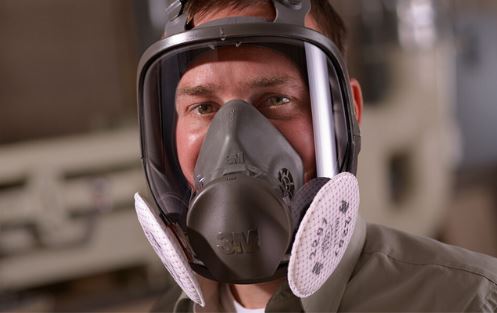Introduction
Respirators are a crucial line of defense for anyone working in environments with dust, fumes, or hazardous materials. However, their effectiveness heavily relies on proper maintenance. Regularly replacing respirator filters is essential for ensuring optimal performance and uninterrupted protection. In this guide, we'll walk you through the process of replacing 3M respirator filters, highlighting key considerations and addressing frequently asked questions.
Step-by-Step Process for Replacing 3M Respirator Filters
Replacing 3M respirator filters is a straightforward process, but following the correct steps ensures a secure fit and optimal protection. Here’s a detailed breakdown:
Select the Correct Replacement Filter
Ensure you have the correct replacement filter for your 3M respirator. The three types of 3M filters are:
-
3M Particulate Filters: Protect against particles such as dust, mists, fumes, aerosols, smoke, mold, and bacteria. These filters use electrostatically charged fibers to trap particulates within their filter media.
-
3M Gas and Vapor Cartridge Filters: Use sorbent material (usually treated carbon granules) to absorb gas and vapor molecules. Different gases require specific gas and vapor cartridge filters, so choose the one that suits your application.
-
3M Combination Filters: Combine particulate and cartridge filters to protect against both particles and gases. Select the combination filter based on the contaminants present in your environment.
Consult the user manual or 3M’s official website if you’re unsure about your respirator model.
2. Check the Condition of Your Respirator
Carefully inspect the respirator for any damage or wear. Address any issues before replacing the filter, as a damaged respirator can compromise the effectiveness of the new filter and, more importantly, your health.
3. Remove the Existing Filter
Locate the filter retainers on the respirator and release them according to the specific model instructions. Typically, this involves detaching the filter housing or twisting the filter counterclockwise with a quarter turn. Avoid applying full force to prevent damaging the respirator.
4. Clean the Respirator Facepiece
Before attaching the new filter, wipe down the entire respirator facepiece and inspect the sealing surface. Use a damp cloth or wet wipes to remove any dirt or debris that could compromise the seal. Ensure the facepiece is completely dry before proceeding.
5. Attach the New Filter
Align the new filter with the markings on the respirator and securely attach it according to the provided instructions. Ensure a snug fit to prevent gaps that might allow contaminants to enter.
6. Conduct a Seal Check
After replacing the filter, perform a seal check as recommended by 3M. Cover the filter inlet with your hands and gently inhale. If air leaks around the edges, adjust the straps or reseat the filters until you achieve a proper seal. Additionally, cover the exhalation valve and exhale with moderate pressure to check for leaks.
Determining the Replacement Frequency for 3M Filters
The frequency of replacing 3M respirator filters depends on several factors, including:
- Concentration and type of contaminants
- Breathing rates
- Humidity levels
- Ventilation
- Temperature
- Carbon exposure time
Even if unused, 3M respirator filters have a maximum use time of six months once removed from the package. Replace the filter immediately if you experience difficulty breathing, smell or taste contaminants, or feel irritation.
Tips for Timely Filter Replacement
- Write the date on the filters when first removed from the pack and note the expiry date stamped on the sealed packet.
- Track how long the filters last by comparing the date on the filter to when it needed replacing.
- If work practices and contaminant levels are consistent, replace your filters according to the recorded timescale and adjust accordingly.
For specific advice on when to change 3M respirator filters, contact our workplace safety experts.
Compatibility of Different Filter Types
Mixing different types of filters isn’t recommended, as it may compromise respirator performance. Each 3M respirator model is designed to work with specific filters. Using incompatible filters can result in inadequate protection or damage to the respirator.
If you need protection against multiple atmospheric hazards, use 3M Combination Filters suitable for your application. For example, pairing a 3M Particulate Filter with a 3M Gas and Vapor Cartridge Filter is ideal for spray painting, as the particulate filter removes airborne droplets or particles, and the gas and vapor filter protects against fumes.
Proper Storage for Unused Filters
Proper storage is crucial for maintaining the integrity of 3M respirator filters. Store them in a clean, dry place away from direct sunlight and extreme temperatures. Keep them in their original packaging or a sealed plastic bag to prevent contamination, and avoid placing filters on surfaces that could introduce dirt or debris.
Safety of Cleaning and Reusing Filters
3M respirator filters and 3M cartridges are designed for single use and are not intended to be cleaned or reused. Exposure to contaminants permanently clogs and contaminates the filter media, compromising its efficiency. Even seemingly clean filters might harbor harmful particles invisible to the naked eye. Cleaning attempts can further degrade the filter's integrity, making it unsafe for reuse.
Dispose of the old filter in a sealed plastic bag according to local regulations.
Selecting the Right 3M Respirator and Filter
Choosing the correct 3M respirator and filter for your specific application is essential for ensuring maximum protection. We carry a comprehensive range of 3M respirators and filters, catering to various needs and preferences. From disposable respirators for short-term projects to reusable respirators like the 3M 6800, 3M 6200, and 3M 7502 for long-term use, our inventory is designed to meet diverse workplace demands.
If the standard 3M respirator kits don’t fully meet your requirements, our team can work with you to create customized solutions.
Contact our team of workplace safety experts today to ensure you get the precise level of protection tailored to your specific job conditions.

